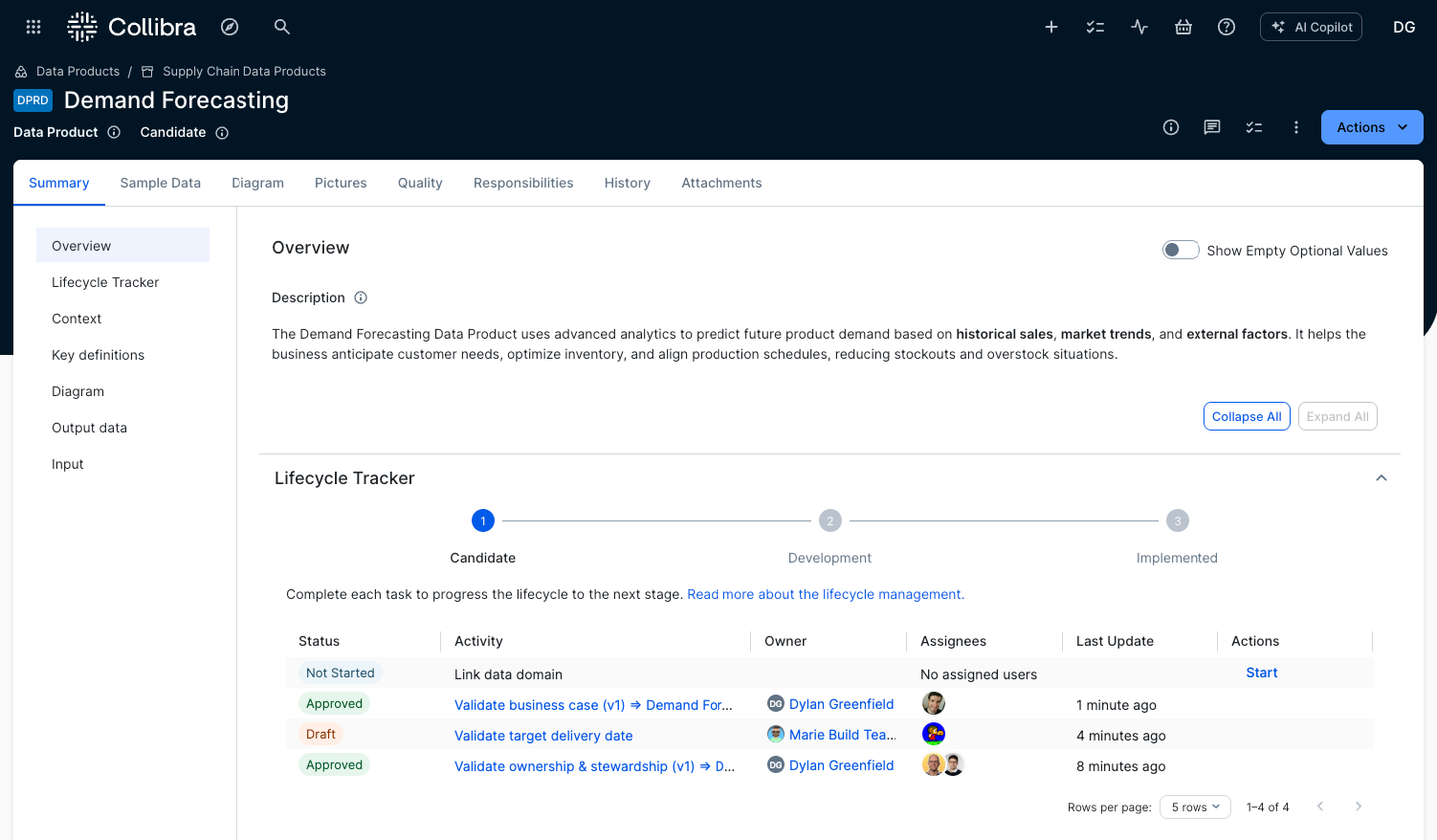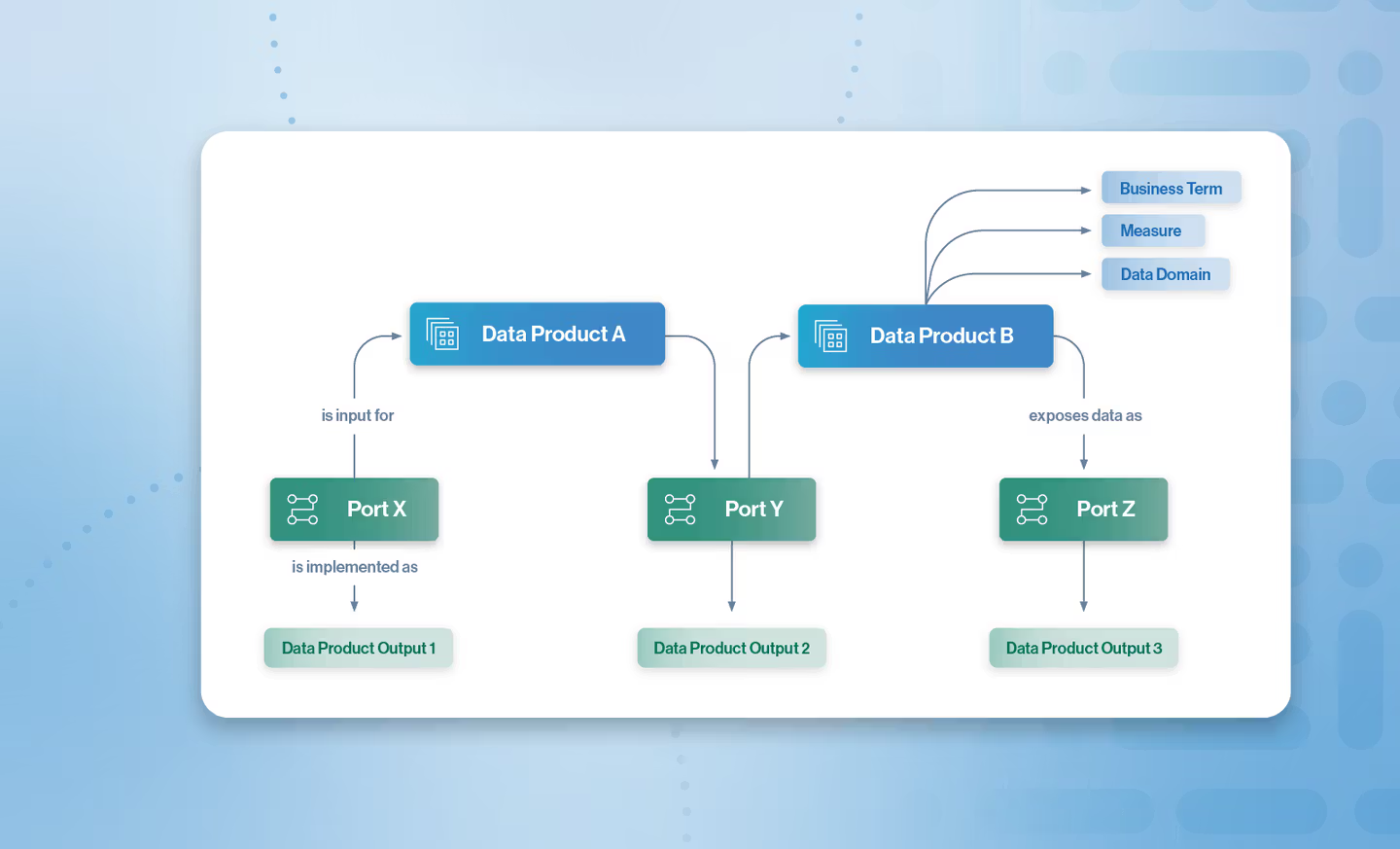New capabilities to enhance the lifecycle management of trusted data products – from creation to consumption

To compete in an AI-powered world, organizations need fast, reliable access to high-quality data. Yet many still struggle to turn raw data into something trustworthy and usable. Fortunately, data products are increasingly seen as the answer. According to McKinsey, they’re “the secret sauce for scaling AI”, enabling organizations to deliver data-intensive applications up to 90% faster, at 30% lower cost and with reduced governance and risk burden.
But turning data into a product takes more than pipelines and platforms. It takes a clear, repeatable process – one that ensures ownership, accountability and usability from start to finish. Without it, data remains fragmented, underused or stuck in systems that don’t meet the needs of business or technical users.
And yet, as IDC points out, many organizations are still figuring out how to manage data products effectively, as a major challenge they face “is that the practices associated with managing data products are immature”.
To help close this gap, Collibra is introducing new capabilities that bring more structure, automation and visibility to every stage of the data product lifecycle. These enhancements help teams manage and scale data products with clarity and confidence, enabling faster delivery of reliable data assets that accelerate decision-making, support AI initiatives and simplify governance across the enterprise.
What's new: Data product lifecycle management
Our latest release delivers powerful enhancements to Collibra’s data product capabilities, fully aligned with the “Power of One” vision for unified data and AI governance. These innovations streamline the creation, management and consumption of trusted, reusable data products – bridging business and technical teams with a single, cohesive experience.
Key updates include:
- Data product lifecycle tracker that offers clear visibility into every stage of a data product’s journey, featuring built-in assessments (Private preview)
- New visual widgets on data product asset pages – such as a relation diagram and an output port viewer – that provide transparency into dependencies and outputs (Private preview)
- Additional workflows to automate common tasks like promoting data sets to data products and creating or versioning data product port (Private preview)
- Expanded relations allowing users to link data products with measures, business terms and data domains for richer context
- A simplified operating model option that merges input and output ports into a single asset type
Together, these enhancements empower business and technical teams to collaboratively govern and confidently consume trusted data assets, accelerating innovation while maintaining control.
How Collibra's latest data product enhancements help
Turning raw data into trusted, reusable assets remains a complex challenge for many teams. Fragmented governance, manual workflows and lack of visibility create roadblocks that delay data product development and reduce confidence in data. Collibra’s latest enhancements embed structure, automation and transparency throughout the data product lifecycle, enabling faster, more reliable creation, governance and consumption.
These enhancements solve key problems, including:
- Inefficient and complex data product lifecycle management
- Low engagement and limited visibility caused by poor documentation, difficult discoverability and unclear data product dependencies and relationships
- Governance silos that hinder collaboration between technical and business teams
By addressing these challenges directly, Collibra enables teams to collaborate more effectively, gain better visibility into data products and accelerate the delivery of dependable data that drives informed decision-making and advances AI initiatives.

Accelerate the creation, management and publishing of trusted data products through a guided, collaborative experience – powered by a lifecycle progress tracker and built-in assessments
How the new data product enhancements work
Collibra’s latest data product enhancements streamline the creation, governance and consumption of data products by embedding more structure, automation and transparency across the lifecycle:
- Data product lifecycle tracker
- Provides a guided, collaborative experience to accelerate data product management and publishing
- Offers clear visibility into every stage of the data product journey, adaptable to align with organizational needs
- Integrates built-in assessments – for tasks such as adding business context or completing bias checks during lifecycle progression – to ensure consistency, trustworthiness and compliance
- New visual widgets on data product asset pages
- An embedded relation diagram increases visibility into data product dependencies
- The output port viewer enables clear inspection and verification of output data at a glance without accessing raw sources
- Additional workflows
- Streamlines tasks like promoting data sets to data products and managing port versions – enabling tailored outputs for different use cases (e.g., APIs, analytics, etc.), supporting iteration without disrupting consumers, and the ability to apply unique governance controls for each version
- Supports standardized, reusable processes that simplify ongoing data product management, accelerating development and deployment
- Expanded relationships
- Allows linking data products with measures, business terms and data domains
- Enriches business context, improving discoverability, governance and understanding across teams
- Simplified data product asset model
- Introduces a consolidated asset model option that merges input and output ports into a single “port,” making it easier to manage and understand data product relationships
These enhancements integrate seamlessly with the broader Collibra Platform, delivering a comprehensive, scalable solution to help teams govern, collaborate on and confidently consume trusted data products.

Why you should be excited about our new data product enhancements
These enhancements empower various personas across your organization, including:
- Data product owners:
- Track progress across the full lifecycle with tailored stages and built-in assessments
- Ensure data products are developed and published with consistency, context and accountability
- Reduce reliance on manual coordination across teams
- Data stewards:
- Govern data products more effectively with clearer relationships to business terms, measures and domains.
- Use lifecycle tracking and built-in assessments to support policy adherence and governance milestones
- Data engineers:
- Accelerate delivery with workflows for promoting data sets and versioning data product ports
- Eliminate overhead from maintaining custom pipelines for common governance tasks
- Collaborate more efficiently with governance teams through standardized handoffs and embedded business context
- Data consumers/Business analysts:
- Understand the origin and meaning of data products more easily via relation diagrams and the output port viewer
- Quickly verify whether a data product meets their needs without relying on engineering support
These features are particularly valuable in scenarios where speed, collaboration and clarity are critical to delivering reliable data products. Some examples are below:
Launching a new data product
A marketing analyst works with data stewards and engineers to build a customer segmentation data product. Using the guided lifecycle, each team contributes during key phases – adding business context, completing validation checks and triggering automated steps like approval and publishing. The lifecycle tracker ensures transparency throughout, while the relation diagram helps stakeholders understand how data flows into the final data product.
Migrating existing data sets into governed data products
A data engineering team is tasked with converting a series of high-value data sets into governed data products. With the provided workflows, they can promote data sets and version ports with minimal manual effort. Expanded relationships ensure the new data products are linked to business terms and domains, providing richer context and enhancing governance.
Evaluating a data product for AI modeling
A data scientist needs to verify the suitability of a financial performance data product for a forecasting model. Using the output port viewer, they quickly inspect the output data and trace upstream dependencies via the relation diagram. Lifecycle status and built-in assessments provide confidence that the data product has gone through proper review and is ready for reuse.
Key takeaways of our data product enhancements
Our new data product capabilities reflect the “Power of One” theme described in our June launch by enabling business and technical users to manage data products within a single, complete platform. From creation to consumption, teams benefit from shared context, automated workflows and consistent governance, all built into the Collibra experience – making it easier to align on trusted data and deliver value at scale.
Where to learn more
In this post:
Related articles

Data CatalogJune 30, 2025
Getting started with data products: A practical introduction

Data CatalogApril 23, 2025
Driving data literacy and accessibility with data products: What every data leader should know

Data CatalogFebruary 5, 2025
Data products 101: Empowering faster, more confident decision-making
Keep up with the latest from Collibra
I would like to get updates about the latest Collibra content, events and more.
Thanks for signing up
You'll begin receiving educational materials and invitations to network with our community soon.


